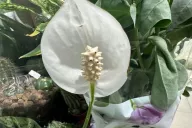Biointensive gardening is a sustainable approach to growing crops that involves creating an optimal growing environment while minimizing environmental impact.
This method was popularized by John Jevons, an American writer and gardening guru who published several books on the subject.
The Jevons method involves planting crops in a grid pattern and maximising the use of garden space.
In this article, we'll look at the Jeavons biointensive gardening method and how it can help gardeners achieve abundant harvests with minimal effort.
What is Biointensive Gardening
Biointensive gardening is an agricultural system that aims to produce high crop yields while maintaining the health and fertility of the soil.

The method involves deep soil preparation, composting and companion planting to create an optimal growing environment. Biointensive gardening uses minimal amounts of water and fertilizers, making it a sustainable method of growing food.
John Jevons is a proponent of biointensive gardening and has spent over four decades perfecting the method. He has written several books on the subject, including How to Grow More Vegetables, which is considered the bible of biointensive gardening.
The Jevons Method involves creating growing conditions similar to those found in nature. The goal is to create a sustainable system that mimics a natural ecosystem while maximizing the use of garden space. Biointensive gardening focuses on creating a healthy soil ecosystem using techniques such as composting, crop rotation, and replanting.
How to Grow More Vegetables
Jevons' book, How to Grow More Vegetables, describes the basic principles of biointensive gardening. The book contains detailed instructions on how to prepare the soil, plant the seeds, and care for the plants. The book also includes information on companion planting and crop rotation, which are important components of the biointensive method.
The Jevons method involves planting crops in a grid pattern, with each crop planted in a specific location. The method is based on companion planting, which involves planting complementary crops together. Companion planting can help reduce the spread of pests and diseases, improve soil fertility, and stimulate plant growth.
The method also involves using the double-digging technique to prepare the soil. Double-digging involves loosening the soil to a depth of 60 centimeters and adding compost to improve soil fertility. This method can help improve soil structure and drainage, which can lead to healthier plants and higher yields.
Benefits of Biointensive Gardening
Biointensive gardening has a number of benefits for both the gardener and the environment. This method can help gardeners produce abundant harvests with minimal effort. It relies on natural methods to maintain soil fertility and reduce the need for fertilizers and pesticides. This method can also help save water, making it a sustainable method of growing food.
Biointensive gardening can help reduce greenhouse gas emissions by reducing the need to transport produce.
The method is based on growing crops locally, which reduces the environmental impact of transportation. Biointensive gardening can also help reduce the carbon footprint of food production by reducing the use of fertilizers and pesticides.








